The Boys of Bradley
By Bob Grimson ‘81
Photography from Special Collections, Cullom-Davis Library
5 min. read
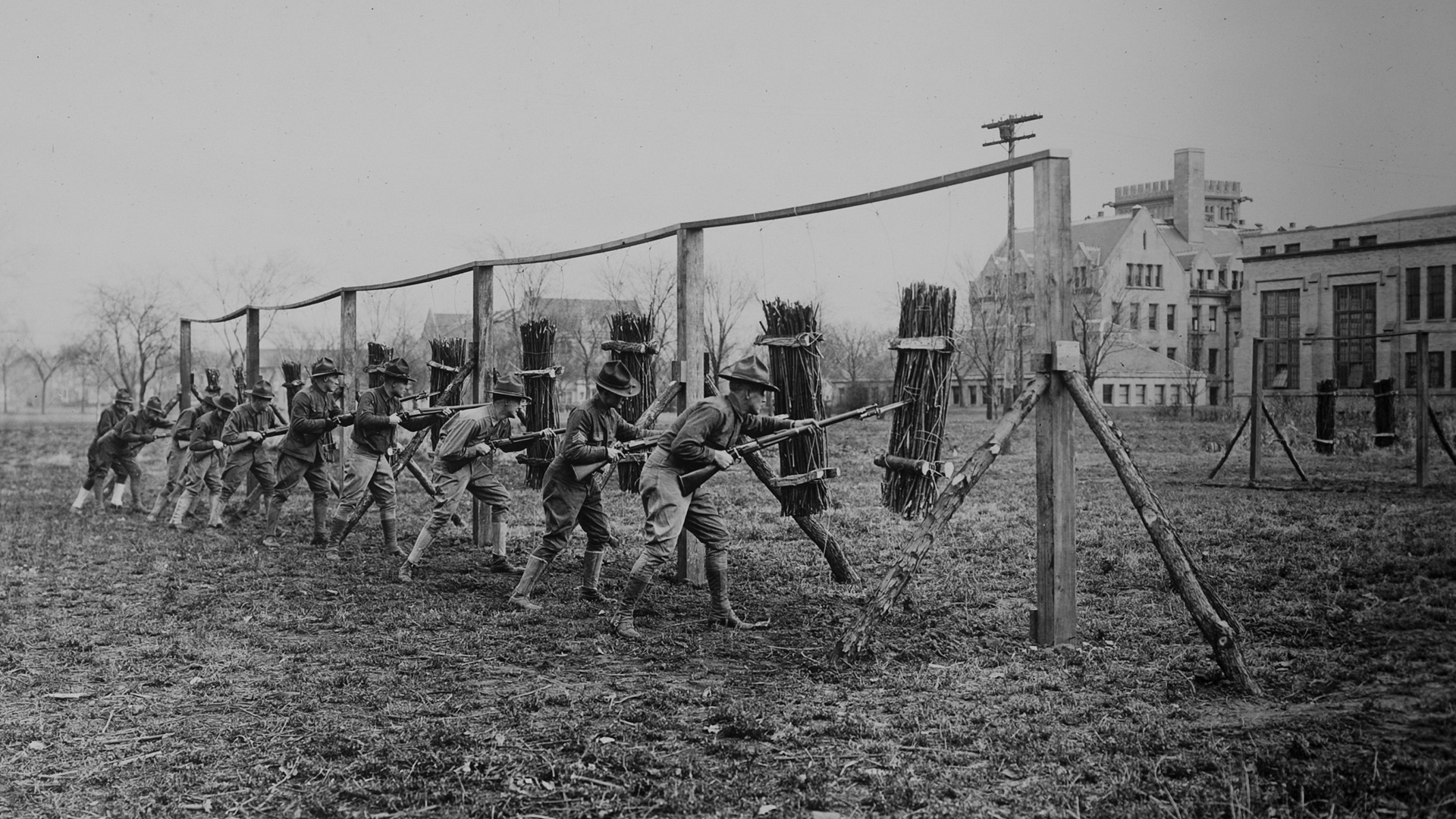
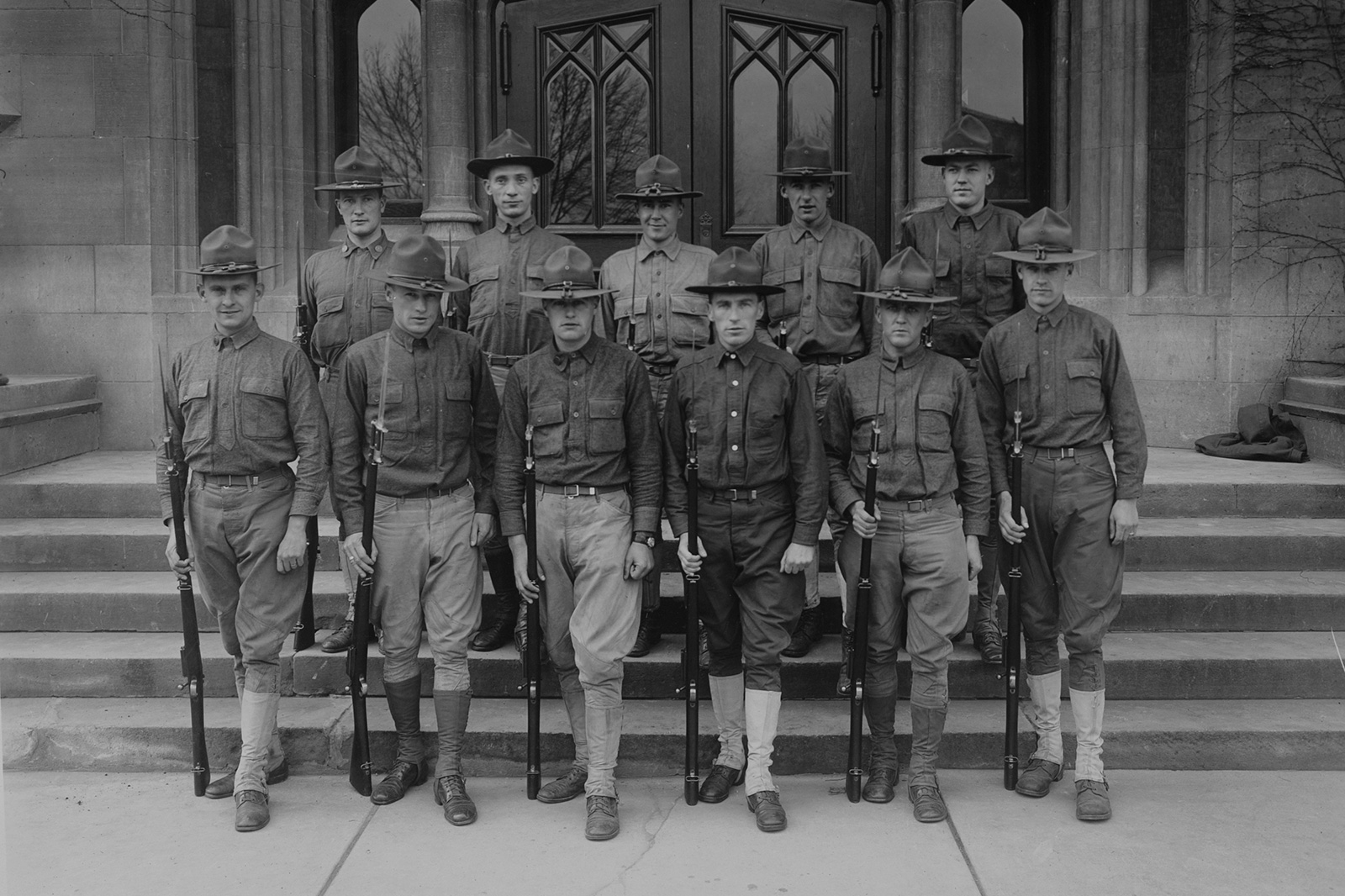
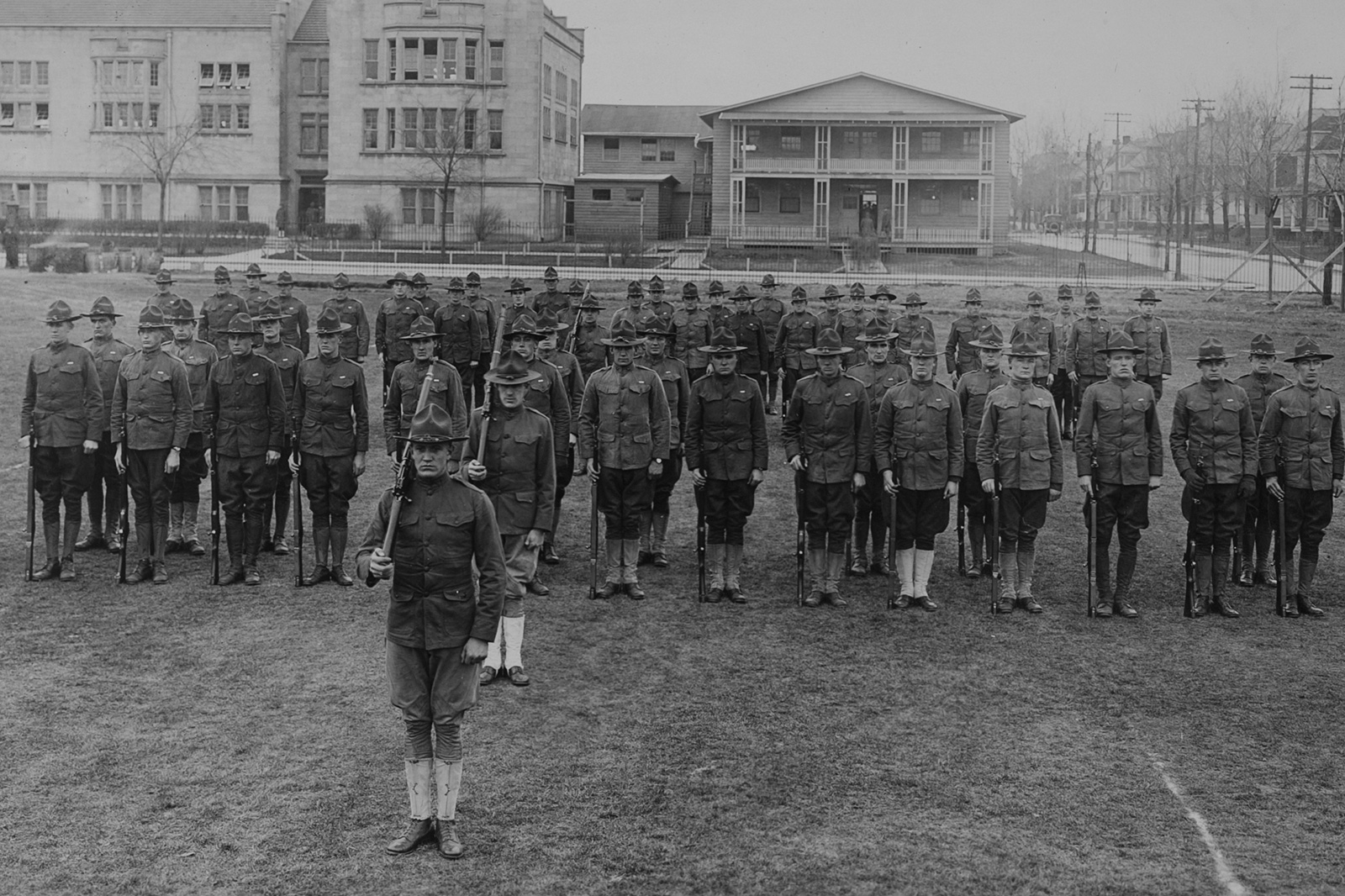
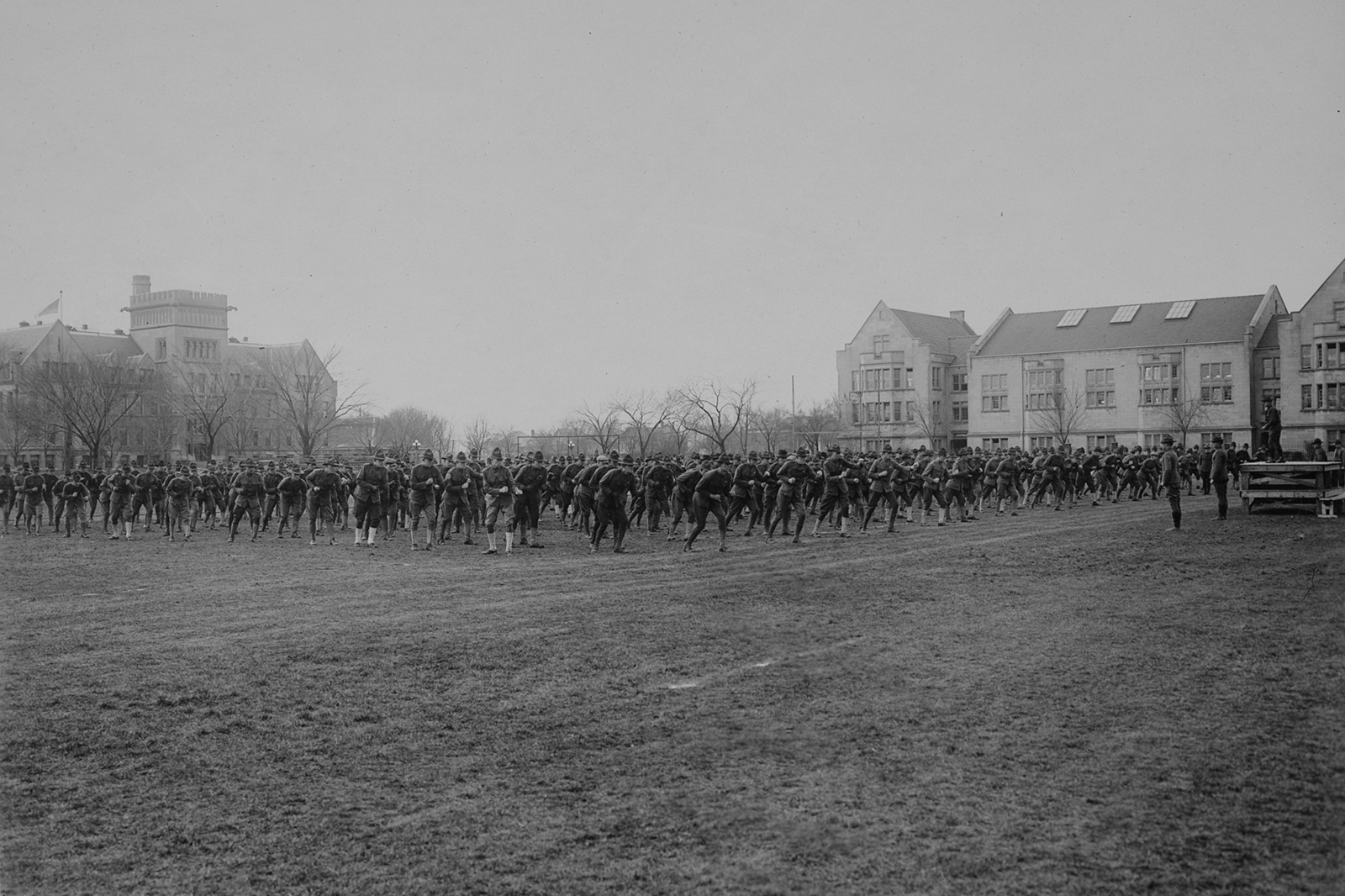
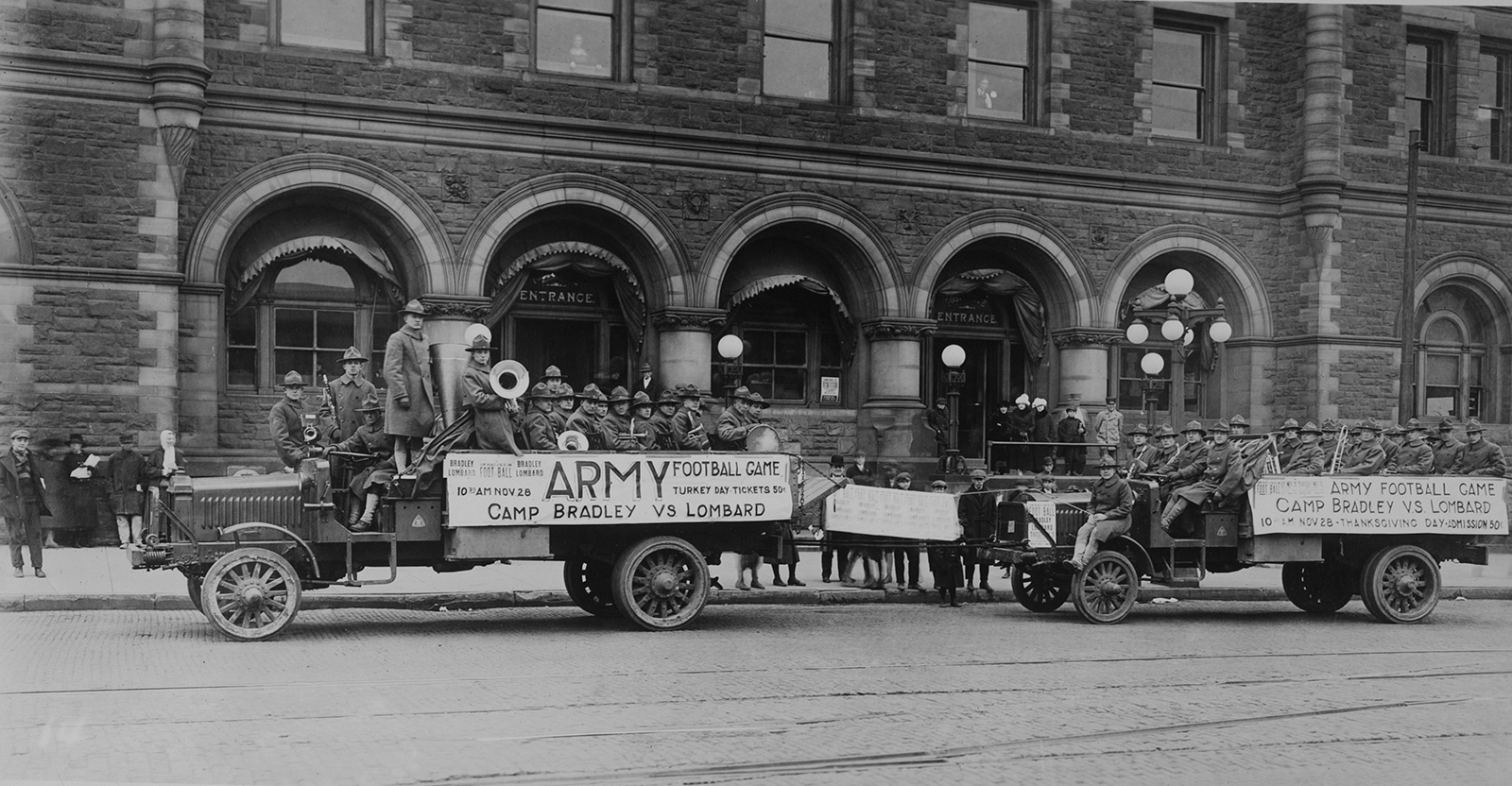
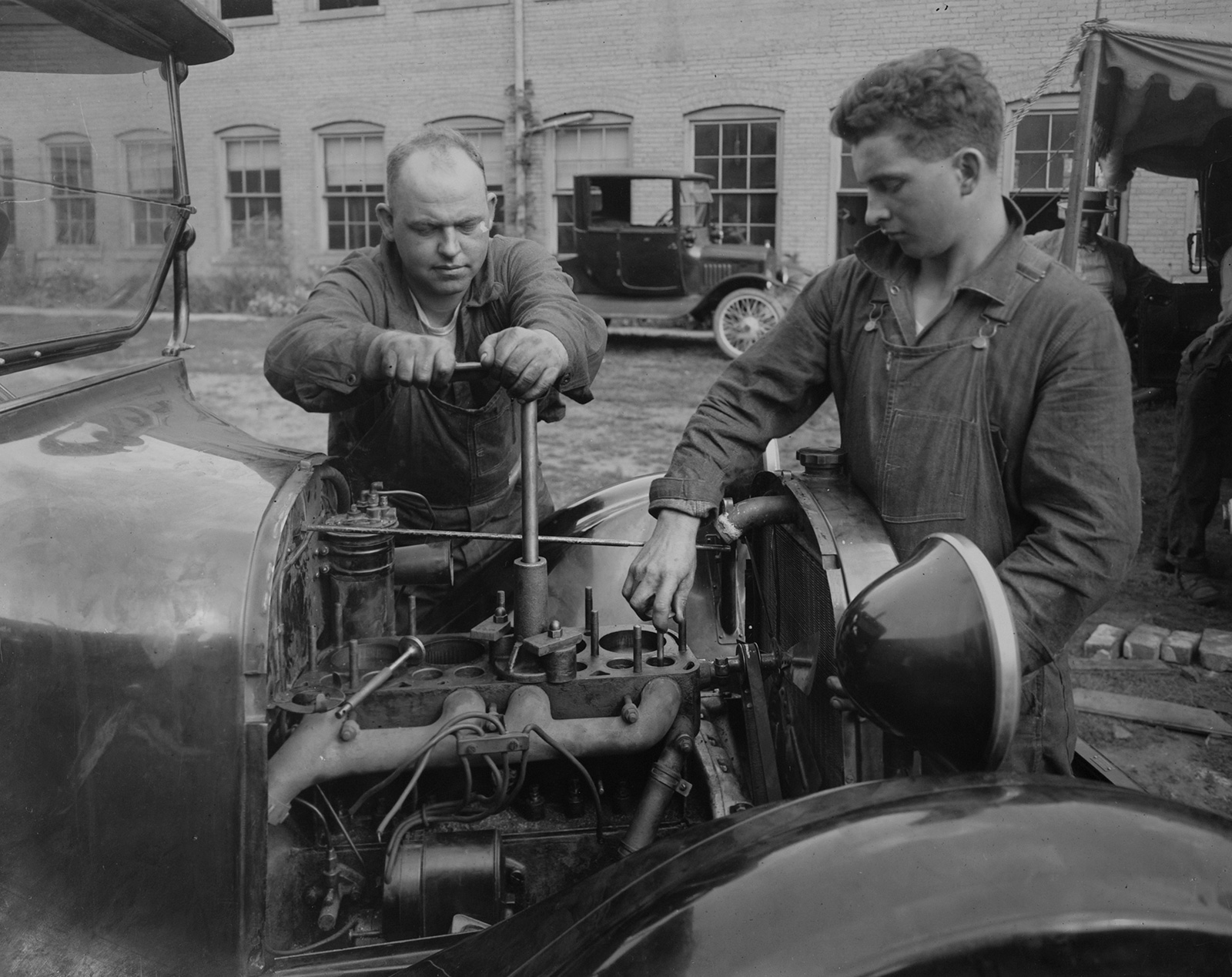
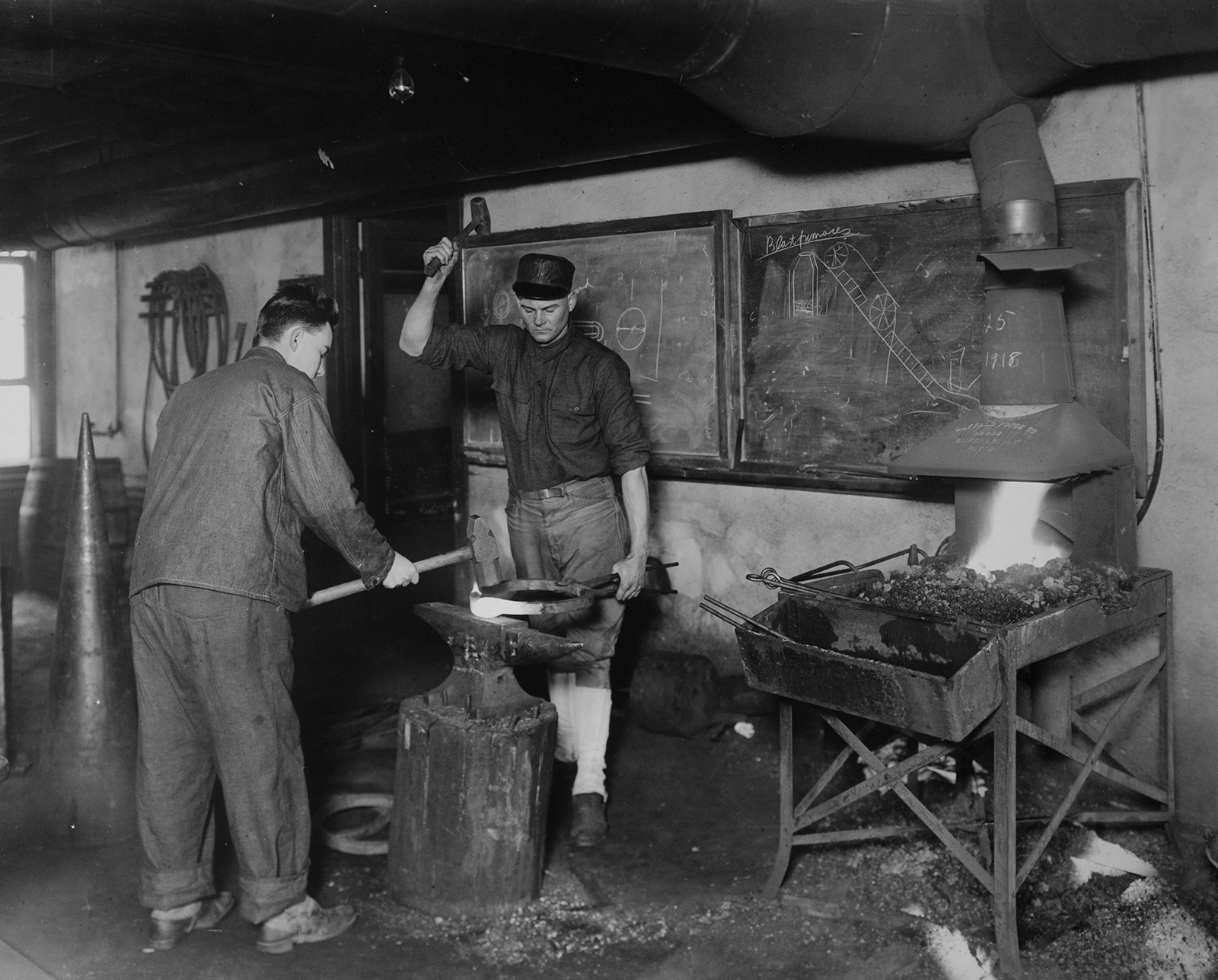
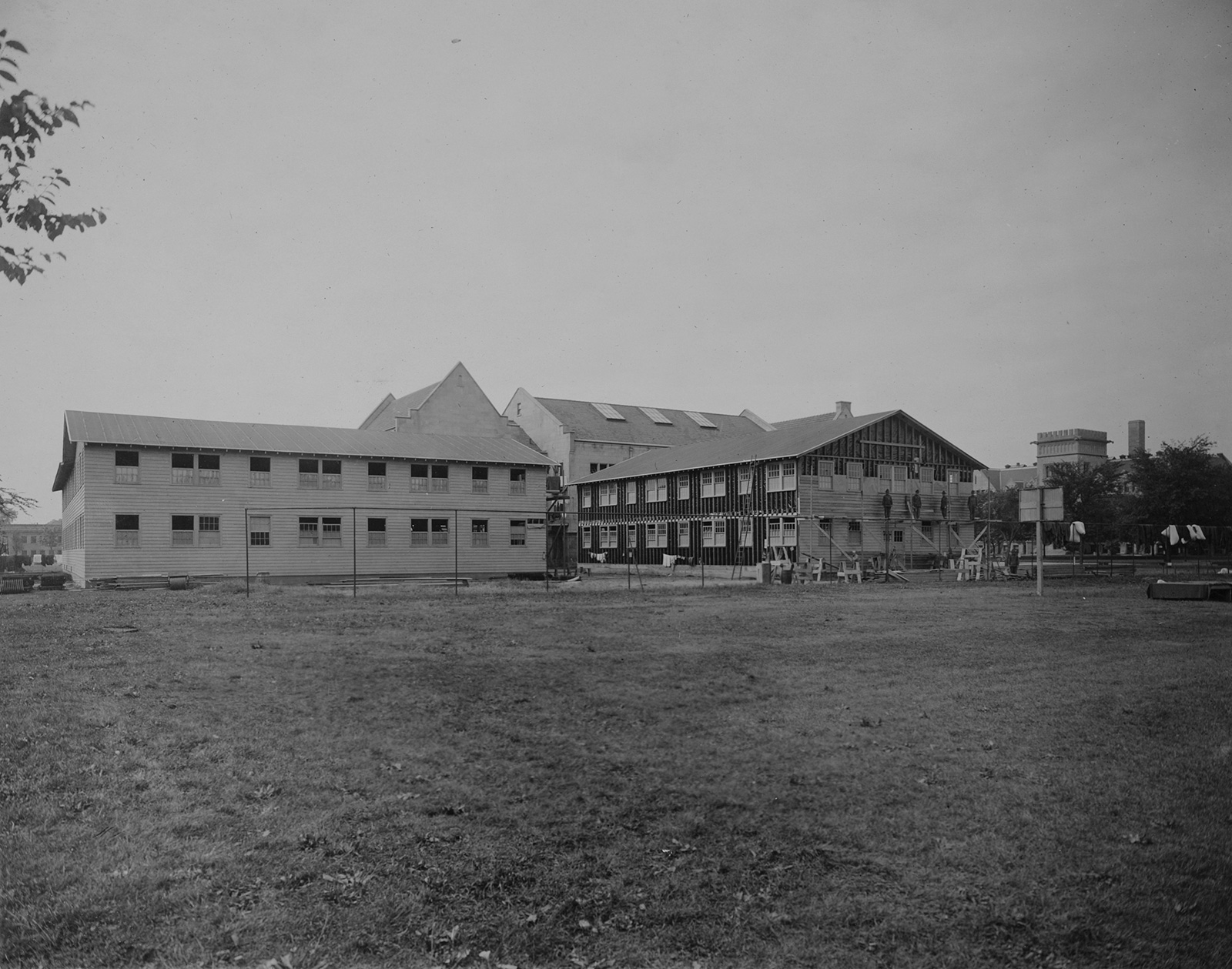
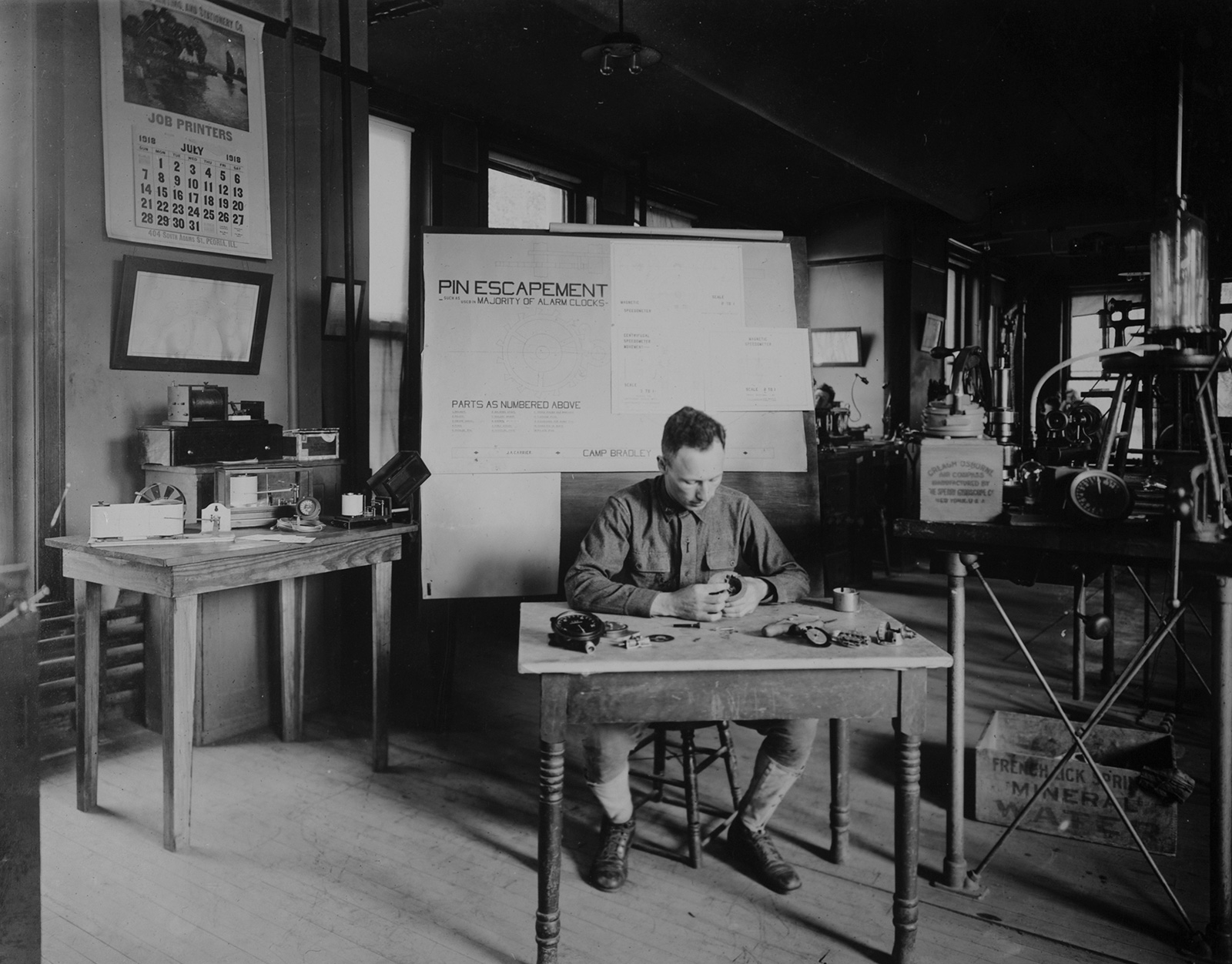
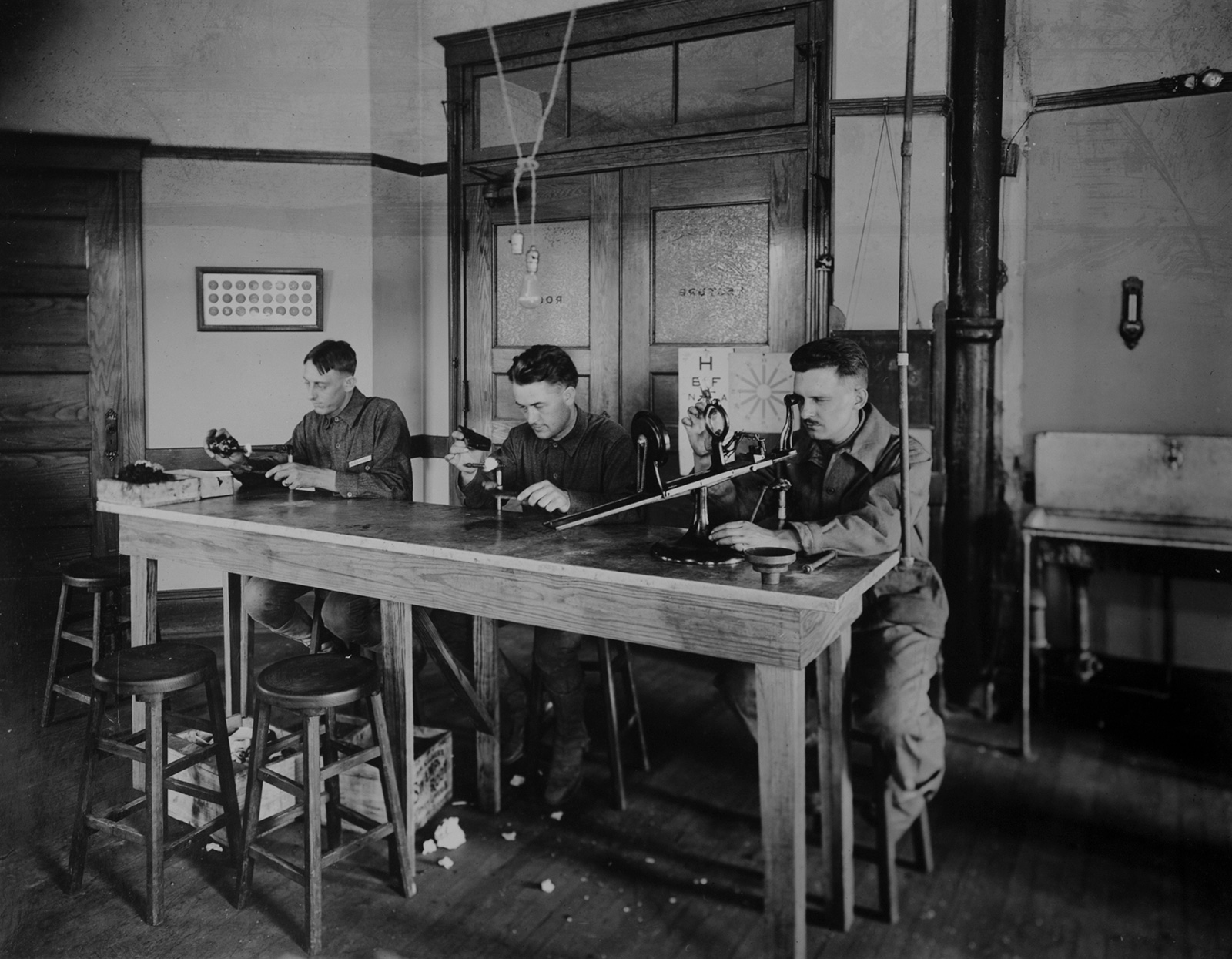 -->
-->
By Bob Grimson ‘81
Photography from Special Collections, Cullom-Davis Library
5 min. read
World War I, the optimistically named War to End All Wars, officially ended at 11 a.m. on Nov. 11, 1918 — the 11th hour of the 11th day of the 11th month. The first modern global conflict swept in social, political, economic and technological changes worldwide – including on the campus of Bradley Polytechnic Institute, known then as Camp Bradley.
On the following pages you’ll see how the boys of Bradley trained before going “over there.”
Approximately 2,000 men from central Illinois and beyond learned the technical skills for modern warfare at Camp Bradley. In early 1918, the government asked the school to join others and offer industrial courses alongside military instruction. Later, the Student Army Training Corps, a coordinated national effort to train officers and technicians, came to campus.
Most of the instruction was in the horological and optical departments. The young men also received instruction in the machine shop, and in blacksmith, gunsmith and carpentry trades.
Physical training, military drill and academic classes made for full days. Considered active-duty soldiers, the Army issued them regulation equipment.
Soldiers became part of campus life. According to the 1918 Polyscope: “It was a strange sight to see an army of “boys in blue” go sweeping over the campus from Bradley Avenue to Main street picking up each stick and paper that cluttered the green.”
The few buildings then on campus saw heavy use. Bradley Hall had a 700-person mess facility to feed soldiers, and they bunked in the gym, now Hartmann Center, or in barracks built as part of their training. Physical training and bayonet drills were conducted on the athletic field, where Founder’s Circle, Olin and Swords halls are today.
Student soldiers weren’t the only ones who served. The 1918 yearbook also listed five pages of names for “Bradley Boys now in the service of the U.S. government,” including graduates, employees and former students. The 1919 edition listed the deaths of 11 men who would not come home.
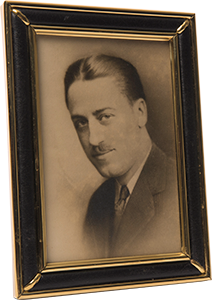
I’ve heard the phrase “walk in someone’s footsteps” but never experienced like at Bradley.
My paternal grandfather died when my dad was 5 so I have few family stories and just one picture of him. A Peoria native with immigrant grandparents, he apparently felt the patriotic call when the U.S. declared war on the Central Powers (Germany, Austria-Hungary and the Ottoman Empire) in 1917.
He trained at Camp Bradley, just a few miles from his home. I’ve seen his military “report card” with his courses, including truck driving and auto mechanics. He probably drilled on the athletic field and may have eaten at Bradley Hall or bunked in Hartmann Center.
My connections to the university are many: a student and an alumnus, a parent who watched his daughter graduate and now a Bradley employee, living within a block of campus. After all these years I feel a kinship that goes beyond the bloodline with a man I never knew.
Especially walking across The Quad, I envision him, clad in khaki and marching in formation or to class. When I’m at Hartmann, I wonder if there are any parts he would still recognize.
I feel closer to my grandfather at Bradley – it’s the only place left in town where I know he spent time. We’re still together in the Bradley family, even though we’ve never met.
Post Your Comments